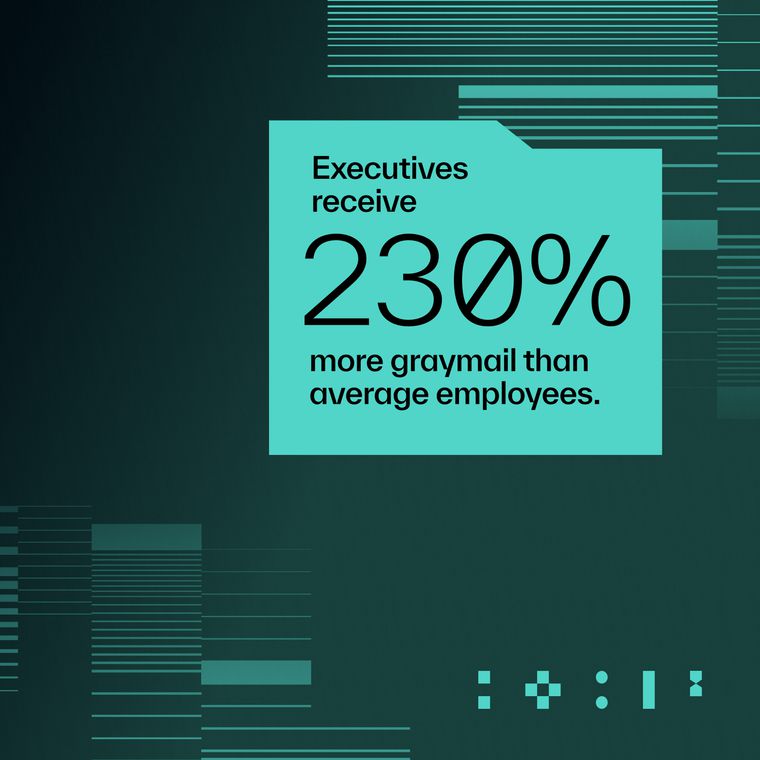10 Questions to Evaluate Cloud Email Security Solutions
Explore 10 key questions to evaluate cloud email security solutions and uncover how AI-native behavioral intelligence can stop today’s most advanced email threats.
June 27, 2025

Email remains the most common entry point for cyberattacks—and AI is reshaping how those attacks unfold. Today’s threats to cloud email use AI to impersonate trusted contacts, mimic real workflows, and blend seamlessly into day-to-day communication.
To stop these attacks, security teams require solutions that use AI the way attackers do—strategically, contextually, and at scale. That means platforms grounded in behavioral intelligence, built to understand your organization’s relationships, language, and patterns well enough to detect anomalies.
To help you identify whether a solution meets the standard, we’ve created a 10-question checklist based on expert insights from The Essential Guide to Cloud Email Security. While the full guide outlines the key challenges facing security teams, this vendor-neutral checklist helps you quickly evaluate whether a solution can stand up to today’s most advanced attacks.
10 Must-Ask Questions for Choosing the Best Cloud Email Security Solution
1. Can the solution detect attacks that don’t include payloads or known indicators?
Legacy tools rely on scanning for malware, bad links, or known domains. Today’s threats often include no payload at all—just persuasive language and human trust.
□ Does the platform use behavioral AI to analyze tone, content, and sender context?
□ Can it detect payload-free BEC, impersonation, and VIP fraud?
□ Will it identify threats that look normal but act abnormally?
2. Does the platform natively understand your employees, vendors, and their behavior?
Effective detection starts with knowing what’s normal. A modern platform should go beyond mere scanning of anomalies in content; it should build consistent baselines across internal and external communications.
□ Can the solution profile users, vendors, and communication history?
□ Does it understand invoice frequency, typical recipients, and message style?
□ Does it adapt to organizational changes over time?
3. Can it detect internal threats like lateral phishing or insider compromise?
Once an attacker gains access to a legitimate account, they can launch phishing campaigns from inside your environment, bypassing external defenses and abusing trust.
□ Does the solution monitor east-west (internal) traffic, not just inbound?
□ Can it detect abnormal behavior from real employee accounts?
□ Does it use consistent but flexible behavioral baselines to flag internal misuse?
4. Is threat remediation instantaneous, or delayed by manual workflows?
Even a short delay increases the chance that an employee clicks, replies, or forwards a malicious email. The longer threats linger, the higher the risk—and the heavier the burden on SOC teams. Manual triage and investigation consume valuable analyst hours, especially when dealing with user-reported phishing and abuse mailbox traffic.
□ Does the platform remediate threats in milliseconds, not minutes or hours?
□ Can it remove messages from every affected inbox automatically?
□ Does it reduce SOC workload by automating triage and surfacing only high-risk messages?
5. Can it automatically detect and stop account takeovers—before internal attacks happen?
Attackers easily exploit legacy authorization, MFA fatigue, and malicious apps to compromise accounts without detection.
□ Does it monitor sign-in activity, device type, and login patterns?
□ Will it flag MFA bypass or risky app installs in real time?
□ Can it take action before compromised accounts are used for lateral phishing?
6. Does the platform give visibility into configuration risks and cloud app permissions?
Misconfigurations, overly permissive apps, and tenant-level changes are some of the easiest ways for attackers to gain footholds. Yet, many email security tools don’t properly monitor them.
□ Can the platform surface risky changes in Microsoft 365 or Google Workspace?
□ Does it detect over-permissioned or suspicious third-party apps?
□ Will it alert on tenant posture drift before leading to exposure?
7. How much value does the solution deliver from AI—vs. using it for trendy marketing?
AI is everywhere now, but not every implementation is meaningful. Bolted-on AI rarely delivers the depth or precision needed to detect modern threats.
□ Is AI central to how threats are detected, scored, and remediated?
□ Does the platform learn from user and organization-specific behavior?
□ Can it explain its decisions in a way analysts can trust?
8. Does it reduce end-user noise while keeping employees productive?
Too many alerts, irrelevant emails, and digest fatigue erode attention and hide real threats. Email security should clean up the inbox, not clutter it.
□ Can the solution suppress graymail based on behavior and engagement?
□ Does it reduce time spent managing quarantines and digests?
□ Can it quantify productivity gains for different user groups?
9. Does the platform provide relevant, real-time security awareness training?
Security awareness training matters—but too often, programs rely on static, legacy content that fails to reflect modern threats. Many simulations are outdated, disconnected from real attack patterns, and time-consuming to manage. The result: low impact, high effort, and limited improvement in user behavior.
□ Is the training customized to reflect the specific risks each employee faces, rather than relying on one-size-fits-all content?
□ Can the platform convert real attacks into timely simulations that deliver training when it’s most impactful?
□ Can security teams measure impact without spending hours managing content and campaigns?
10. Is it built for the future—or just retrofitted for today?
Some solutions claim to be cloud-native but were originally built for a different era. Ask how deeply the architecture supports modern workflows, with an eye toward future re-configurations and threat vectors.
□ Was the platform built API-first, or adapted from SEG infrastructure?
□ Can it deploy quickly and integrate deeply with cloud providers and pre-existing security tools?
□ Does it protect communication platforms across the SaaS environment, beyond email?
Protect What Powers Your Team
This checklist was designed to help you ask the questions that matter, so you can move beyond endless feature comparisons and assess whether a platform is truly built for how threats operate today. For a deeper exploration, the full guide expands on the challenges behind these questions, and outlines the core capabilities no modern email security solution can do without.
Grounded in analysis of attacker tactics and defense gaps, this checklist is just the start—get the full picture by downloading The Essential Guide to Cloud Email Security.
Related Posts
Get the Latest Email Security Insights
Subscribe to our newsletter to receive updates on the latest attacks and new trends in the email threat landscape.


